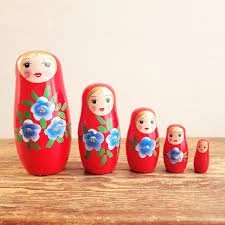Suprise Anxiety
When anxiety takes hold, in primary school.
There are many things that can make our kids anxious. Just the word anxiety makes me feel a bit anxious myself.
It’s a word that is thrown around a lot at school when talking about mental health, but do our kids understand what it means and more importantly, what to do when they experience it?
Our little journey through anxiety -
Late last year, one of our kids had an unexpected encounter with a neurodiverse adult, which left them fearful and anxious. Our once happy-go-lucky, bold and outgoing child (who would happily talk to anyone) became withdrawn and suffered panic attacks and sleep disturbance.
The environment where the encounter happened and the person with whom it took place could not be simply removed/avoided as it was part of our weekly rhythm and community. In truth, the person had not done anything particularly wrong in their interaction, but our little one had been without an adult and it had taken them by surprise, feeling vulnerable and unsure of what to do.
This can happen in life.
There are things and people that impact some far more deeply than others.
In our busy family life, the weeks roll around quickly. After having a break over the summer from our weekly routines, things seemed a little better. But with the start of the new year, each time the weekly event rolled around there were panic attacks and paralysing worry.
For six months we sat in this cycle. There were things we did to help, including following advice from others and praying with her.
But sometimes, we need some professional help. We needed strategies to help in the moment, when reasoning was not possible and their frontal lobe was melting down - shaking/hyperventilating.
A friend gently prompted me to seek some extra help from a psychologist to try and help our little one move through and beyond this trauma that was now seemingly stuck in their body.
All up, we did 5 sessions with the psychologist (with a mental health plan from our GP)
It was a mixture of talking, games, drawing and EMDR - which proved to be very helpful - allowing them to sit with their feelings and for their body to release what it needed to. The psychologist explained that the brain is designed to heal and this process (EMDR) allows for that.
My hope, in this post, is
a) to encourage you to seek professional help if your child has anxiety that’s beyond what you can help with as a parent. Seek out a recommendation from someone you know. These sessions were invaluable to us - to our child and us as parents.
b) that if you aren’t in a position to get to a psychologist, that some of these tips might be of practical help for you/your little one if they are experiencing a similar anxiety.
2 VERY helpful picture books:
Hey Warrior by Karen Young
Ups and Downs by Karen Young
In her book Hey Warrior, Karen explains that your amygdala is the part of your brain that tries to protect you, but it can sometimes act like a smoke alarm - it’s going off, but the toast is just a little burnt. The house isn’t burning down.
Our little people need to recognise that that’s what’s going on. They’re not broken because they feel anxious. Their body is just doing what it’s meant to do - to protect us, but we need to be the boss and remind our bodies that we are ok, when we know we are safe.
Arming them with strategies for when they feel unsettled in the moment -
Using squishies to calm down/distract in the moment
Taking deep breaths
Using their imagination to picture themselves somewhere they love as a circuit breaker eg our little person loves the stage and feels pure joy when imagining being there
When outside of the situation -
As a family of faith, equipping them with a scripture to speak out when feeling overwhelmed
Giving them positive self talk lines to say in the moment eg “I’m safe with mum and dad” “I can do hard things”
Talking through “what’s the worst that could happen?”
Helping them understand that this (feeling anxious) is actually only one very small part of them - using babushka dolls helped to visually understand this - the biggest doll is actually the real you - strong, creative, brave and the tiny little doll that fits inside them all is the anxious part.
Avoidance isn’t an option in this scenario (this is obviously case by case)
Avoidance is something that we can do online, but we are not raising keyboard warriors. We are raising humans who will interact with other humans in work places, schools and communities.
We are raising people who recognise and are ok with difference in others while knowing they are strong and can do hard things, who are secure in their attachment with their parents/carers and know they are loved.
Perhaps most importantly, this experience has given us the opportunity to walk out this journey with our little person, TOGETHER.
It has begun to teach them that there are some things that can shift quickly in our hearts/minds and others that take time and work to heal. In both out-workings there are lessons for us that we will carry in our lives and be able to share with others.
We are not quite out the other side of this journey with our child yet, but we are slowly and steadily making gains.
Our other kids have had to learn patience, kindness and grow in their tolerance and empathy too. It’s been quite the family journey!
We can do hard things x


